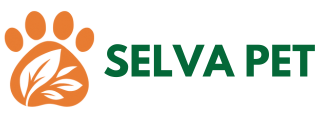Grain Free and Natural Food: Can They Be Combined? This is a big question for pet owners today. You want what’s best for your furry friend, and that often means choosing the right diet. In this article, you’ll learn about the benefits of a grain free diet, explore natural food options, and get practical tips for combining the two. From healthy eating to organic recipes, we’ll help you understand how to make the best choices for your pet’s health and happiness. Let’s dive in!
Understanding Grain Free and Natural Food: Can They Be Combined?
When diving into the world of pet nutrition, one question often pops up: can grain-free and natural food be combined? This is a hot topic among pet owners, and I totally get it. The idea of providing the best for our furry friends is always at the forefront of our minds. So, let’s break this down together.
Grain-free diets focus on eliminating grains like wheat, corn, and soy, which some pets may struggle to digest. On the other hand, natural food emphasizes whole, unprocessed ingredients, often free from artificial additives. Now, combining these two approaches can seem daunting, but it’s entirely possible.
In my experience, many pet owners have seen incredible results when they find a balance between grain-free and natural options. The key is understanding your pet’s specific needs. For example, some pets thrive on grain-free diets, while others benefit from the nutrients found in whole grains. It’s all about trial and error, and being attentive to how your pet reacts to different foods.
The Benefits of a Grain Free Diet for Pets
Let’s talk about the benefits of a grain-free diet for our beloved pets. First off, many pets experience improved digestion when grains are removed from their diet. Grains can sometimes lead to allergies or sensitivities, resulting in uncomfortable symptoms for our furry friends.
Additionally, grain-free diets often include higher protein levels from quality meat sources. This can lead to better muscle development and overall energy levels. I’ve personally seen dogs and cats become more playful and active after switching to a grain-free diet.
Moreover, grain-free foods are usually rich in healthy fats, which are essential for maintaining a shiny coat and healthy skin. Trust me, you’ll notice the difference!
Finally, many grain-free options are made with real fruits and vegetables, providing essential vitamins and minerals. This can lead to a healthier immune system and better overall well-being for your pet.
Exploring Natural Food Options for Your Furry Friends
Now, let’s explore natural food options for our furry friends. Natural pet food is all about using whole, minimally processed ingredients. These foods typically avoid artificial additives, preservatives, and fillers, ensuring that our pets get the best nutrition possible.
One of the best things about natural food is its variety. You can find options that include real meat, vegetables, and even fruits. This diversity allows you to tailor your pet’s diet to their unique needs. For instance, if your dog has a sensitive stomach, you can choose a natural food with easily digestible ingredients.
Additionally, many brands focus on sourcing their ingredients ethically and sustainably. This means you can feel good about what you’re feeding your pet, knowing that it’s not only good for them but also for the planet.
I’ve often found that pets on natural diets tend to have more energy and a healthier appearance. Their coats are shinier, and they seem more vibrant overall. It’s like a glow-up for our furry companions!
Gluten Free Alternatives: What You Need to Know
Gluten-free alternatives are another layer to consider when discussing grain-free and natural food. Some pets may have gluten sensitivities, which can lead to digestive issues and skin problems.
When looking for gluten-free options, it’s essential to read labels carefully. Many grain-free foods are naturally gluten-free, but not all. Ingredients like quinoa and buckwheat can be beneficial, as they provide protein and nutrients without gluten.
In my experience, introducing gluten-free options can be a game-changer for pets with sensitivities. I’ve seen dogs who previously struggled with skin issues flourish once gluten was removed from their diet.
However, it’s crucial to consult with your veterinarian before making any significant dietary changes. They can help you determine if gluten is an issue for your pet and guide you toward the best options.
Healthy Eating: Why It Matters for Your Pet’s Health
Healthy eating is vital for our pets, just as it is for us. A balanced diet can lead to a longer, happier life for our furry friends. When we prioritize nutrition, we’re setting our pets up for success.
A healthy diet can help prevent obesity, which is a growing concern among pets today. Obesity can lead to various health issues, including diabetes, joint problems, and heart disease. By focusing on a grain-free and natural diet, we can help our pets maintain a healthy weight.
Moreover, good nutrition supports a strong immune system, which is crucial for fighting off illnesses. I’ve seen pets bounce back from sickness much quicker when they’re on a nutritious diet.
Lastly, healthy eating can improve your pet’s mental well-being. A well-nourished pet is often more energetic and playful, leading to a happier life overall.
Organic Grain Free Recipes: Simple and Delicious Ideas
Let’s get creative in the kitchen with some organic grain-free recipes! Making homemade meals for your pets can be both fun and rewarding. Plus, you know exactly what’s going into their food.
One simple recipe I love is a chicken and sweet potato stew. Just boil some organic chicken breast, add diced sweet potatoes, and let it simmer. You can also throw in some carrots and peas for added nutrients. Your pet will gobble it up!
Another great option is a beef and vegetable mix. Cook ground beef and mix it with finely chopped spinach, carrots, and zucchini. This meal is packed with protein and vitamins, making it a nutritious choice for your pet.
Don’t forget to consult with your vet about portion sizes and any specific dietary needs your pet may have. Homemade meals can be a fantastic supplement to their diet, but balance is key!
Plant-Based Diet: Is It Right for Your Pet?
Now, let’s discuss the idea of a plant-based diet for pets. This topic can be quite controversial, but it’s gaining traction among pet owners. Some pets thrive on a plant-based diet, while others may not.
If you’re considering a plant-based diet for your pet, it’s essential to ensure they receive all the necessary nutrients. This includes protein, vitamins, and minerals. Many plant-based pet foods are formulated to provide complete nutrition, but it’s crucial to do your research.
I’ve seen some pets do well on a plant-based diet, especially those with specific health issues. However, it’s vital to monitor your pet closely and consult with a veterinarian to ensure they’re thriving on this type of diet.
Choosing Natural Pet Food: Tips for Pet Owners
When it comes to choosing natural pet food, there are a few tips I’ve picked up along the way. First, always read the ingredient list. Look for whole foods, and avoid anything that sounds like a chemical or filler.
Next, opt for brands that prioritize transparency. Companies that share where they source their ingredients and how they’re processed tend to be more trustworthy.
Don’t be afraid to ask for recommendations from your vet or fellow pet owners. Personal experiences can provide valuable insights into which brands may work best for your pet.
Lastly, consider trying different brands and formulas to find the perfect fit for your furry friend. Every pet is unique, and what works for one may not work for another.
Whole Foods vs. Processed: What’s Best for Your Pet?
The debate between whole foods and processed foods is ongoing in the pet nutrition world. Whole foods are typically less processed and retain more nutrients, while processed foods can offer convenience.
In my experience, whole foods are often the better choice for pets. They provide essential nutrients without the additives and fillers found in many processed options. However, not all processed foods are created equal. Some high-quality brands use minimal processing to retain nutrients.
When choosing between whole and processed foods, consider your pet’s specific needs and preferences. Some pets may prefer the taste and texture of processed foods, while others thrive on whole foods.
Clean Eating: How It Can Transform Your Pet’s Diet
Clean eating is a concept that can significantly impact your pet’s diet. By focusing on whole, natural ingredients, you’re providing your pet with the best possible nutrition.
In my experience, pets on clean diets tend to have more energy and fewer health issues. They also often have healthier coats and skin. It’s amazing what a difference clean eating can make!
To transition your pet to a clean diet, start by gradually introducing natural foods. Mix in some whole ingredients with their current food, and slowly increase the ratio of clean foods over time. This will help your pet adjust and reduce any digestive upset.
Allergen-Free Meals: A Solution for Sensitive Pets
If your pet has allergies or sensitivities, allergen-free meals can be a lifesaver. Many pets struggle with common allergens like grains, dairy, and certain proteins.
Creating allergen-free meals is all about knowing what your pet can and cannot eat. I recommend working with your vet to identify specific allergens and create a meal plan that suits your pet’s needs.
There are also many commercial allergen-free pet foods available. Just be sure to read the labels and choose options that align with your pet’s dietary restrictions.
Combining Grain Free and Natural Food: Practical Tips
Combining grain-free and natural food can be a great way to provide balanced nutrition for your pet. Here are some practical tips to help you navigate this process.
First, start by selecting high-quality grain-free natural foods. Look for brands that prioritize real ingredients and avoid fillers.
Next, introduce new foods gradually. Mix a small amount of the new food with your pet’s current diet, and slowly increase the ratio over time. This will help your pet adjust without causing digestive upset.
Finally, monitor your pet’s health and behavior closely. If you notice any changes, consult with your vet to ensure you’re meeting your pet’s nutritional needs.
Common Myths About Grain Free and Natural Food
There are several myths surrounding grain-free and natural food that can confuse pet owners. One common myth is that all grain-free diets are healthier. While many pets benefit from grain-free options, it’s not a one-size-fits-all solution.
Another myth is that natural food is always better than processed food. While whole foods are generally more nutritious, some high-quality processed foods can provide excellent nutrition as well.
It’s essential to do your research and consult with your vet when it comes to your pet’s diet. Don’t let myths guide your decisions; instead, focus on what works best for your furry friend.
Signs Your Pet Thrives on Grain Free and Natural Food
So, how do you know if your pet is thriving on a grain-free and natural diet? There are several signs to look for.
First, observe your pet’s energy levels. If they seem more playful and active, that’s a great sign!
Next, check their coat and skin. A shiny coat and healthy skin are indicators of good nutrition.
Additionally, keep an eye on your pet’s digestion. If they have regular bowel movements and show no signs of discomfort, that’s a positive sign.
Finally, monitor their overall health. If your pet seems happy and healthy, it’s likely that their diet is working for them.
Transitioning to a Grain Free and Natural Diet: A Step-by-Step Guide
Transitioning your pet to a grain-free and natural diet doesn’t have to be overwhelming. Here’s a step-by-step guide to help you through the process.
- Consult with Your Vet: Before making any changes, talk to your veterinarian. They can provide personalized advice based on your pet’s specific needs.
- Choose High-Quality Foods: Select grain-free and natural options that prioritize real ingredients. Look for brands that you trust.
- Start Gradually: Begin by mixing a small amount of the new food with your pet’s current diet. Gradually increase the ratio over a week or two.
- Monitor Your Pet: Keep an eye on your pet’s health and behavior during the transition. If you notice any issues, consult your vet.
- Be Patient: Every pet is different, and it may take time for them to adjust. Stay patient and positive throughout the process.



